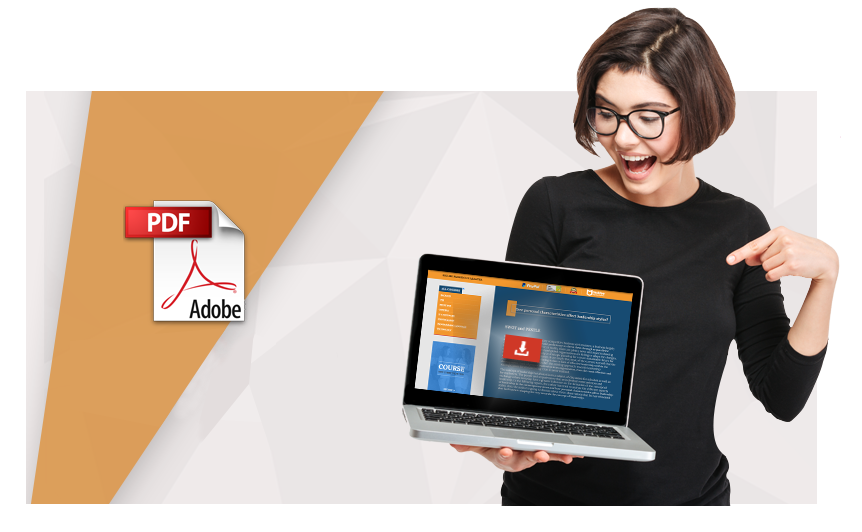- Secure Payment Guarantee

Full Question
Your task is to produce a 15-20 page of financial plan of your business prospectus with an original concept. The form of business chosen should be intended kind business which you would like to establish after finishing this course. Financial plan is an essential element for business plan, which provides a detailed overview of your finances
Elements of the business plan (focus on financial plan):
- FRONT
- Cover Page with company name and logo
- Title Page with name of company, name of participants, course title and teacher, and date produced
- Table of Contents (The best format is to follow subject headings, labeled 1.0, 1.2, 1.3, 2.0, 2.1,2.2, etc)
- Executive Summary (2-4 pages, exceptionally written) -This is the resume of your business plan,
highlighting the key selling points about your business opportunity. It should have elements of each of the sections but is not a formal "summary" of each. Thissection should sell the concept as a whole, with the hope that the reader will be interested enough to read further.
- BODY:
Every business plan is different, so this section may or may not be appropriate, but these are common:
- Company Description, Products and Services
A clear, concise, and compelling description of your business concept as well as the products or services it provides. In describing the company and products it can be useful to describe the market for the products, who would purchase the product and why.
- Financial Risks and Opportunities
The financial section of a business plan is very important to investors, and this is the same for the business plan prospectus. The financial plan will be used to judge the credibility of your company—lofty expectations and unsupported costs will hurt your credibility, while reasonable, and reasonably supported financial plans will boost credibility significantly. For a prospectus, you do not need to have detailed financial projections, but you do need to have a few basic elements:
- Startup Costs: A detailed breakdown of your needed capital for startup and an explanation of what
it will cover. This needs to cover all costs including anticipated rates of return for investors, depending on the kind of investment sought.
- First-year Operating Expenses: This provides detail regarding your expected expenses, and
projected sales. Consider the questions below, and also look to your book and outside sources
posted on the Resources.
iii. Break-Even Analysis: Using modest expected growth in sales (don't lose your credibility by claiming to corner the market), minus your expected growth in operating expenses, when will your company become profitable? This could be represented visually using a chart, and in writing.
- Future Funding Requirements: After the initial startup investment, what further investment will be needed to spur continued growth, and how will that investment be spent?
Must Haves:
- Thorough written discussion of all elements
- Tables, charts and graphs where-ever useful, using proper figure captions and cross references.
- There must be significant written content. A financial section that is just a collection of spreadsheets will fail as a writing project. There should be an introduction, followed by discussion of all elements of the financial plan. The writing of this section should also discuss how the financial numbers were substantiated, and what assumptions were used to make the analysis (e.g. assumptions on variable costs for example--"Our financial projections assume a continuation of historical growth in copper prices of 3% annually.
- This section may also consider critical risks.
- Calculating Operating Costs
In the start-up phase, you will have to make reasonable assumptions about your business inestablishing your
budget. You will need to answer questions such as:
- How much can be sold in year one?
- How much will sales grow in the following years?
- How will the products and/or services you are selling be priced?
- How much will it cost to produce your product? How much inventory will you need?
- What will your operating expenses be?
- How many employees will you need? How much will you pay them? How much will you pay yourself?
What benefits will you offer? What will your payroll and unemployment taxes be?
- What will your facilities needs be? How much will it cost you in rent or debt service for these facilities?
- What equipment will be needed to start the business? How much will it cost? Will there be additional equipment needs in subsequent years?
- What payment terms will you offer customers if you will sell on credit? What payment terms will your suppliers give you?
- How much will you need to borrow? What will the collateral be? What will the interest rate be?
- How much money will you raise from investors, and how will they be paid?
(ExcerptedfromStart Your Own Business: The Only Start-UpBook You'll Ever Need, by Rieva Lesonsky and the Staff of Entrepreneur Magazine, © 1998 Entrepreneur Press)
- Management and Personnel
Summarizes the backgrounds and qualifications of the student.
- BACK MATTER:
- Works Cited in APA format
- Appendix (Appendix A should be your resumes, Appendix B can be any supporting material you think would be helpful)
- FORMAT AND DESIGN:
All business plans should have the following:
- Consistent Subject Headings for all sections (Labeled 1.0, 1.2, 1.3, 2.0, 2.1, 2.2, etc)
- Visuals with proper Figure Captions and Cross References in text
- Running Header and/or Footer (perhaps with company name, but definitely with page numbers)
- Citations In-Text throughout, and in Works Cited.
- According to Ernst and Young Business Plan Guide, “the business plan is a hybrid document—part projection and part sales tool—it must walk a fine line in content and tone of presentations. The information must be accurate, yet must convey a sense of optimism and excitement. The tone should be business-like. If there is too much form over substance, people won’t take the plan seriously….Therefore a business plan makes good use of graphics, or that paints a picture of the company in a provocative way…Even minor errors in spelling and grammar can suggest substantial negatives regarding the entrepreneur and therefore the entire enterprise. Have someone skilled in this area review the plan to eliminate these minor annoyances that may have a negative impact on the reader.”








